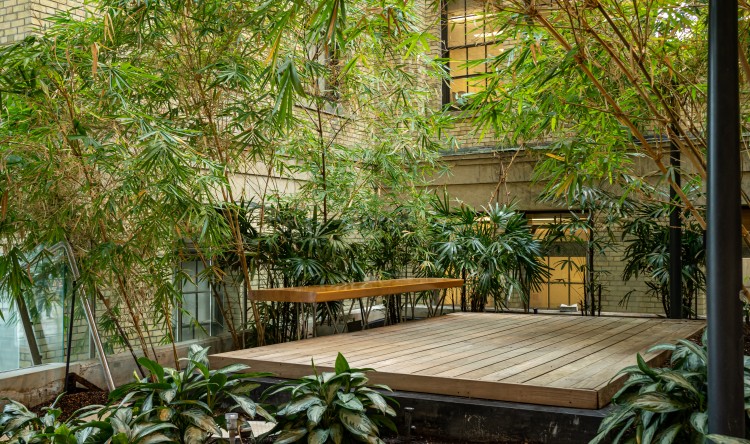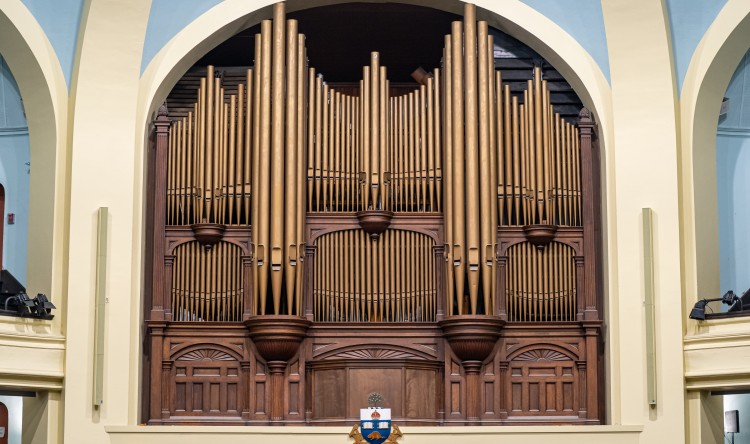Three features of the St. George campus that require unique maintenance
The University of Toronto has many beautiful and unique features on campus that demand special and thorough maintenance to remain in optimum condition.
Here is an insider’s look at just a few of these on the St. George campus and the special care that they require:
Bamboo garden at the Terrence Donnelly Centre for Cellular and Biomolecular Research

This vibrant bamboo garden was originally built 13 years ago and has been a prime spot for students, faculty, and staff passing through to decompress and escape the city’s hectic environment.
To thrive, this delicate environment requires frequent and thorough maintenance.
Every bamboo stalk in the garden is wiped weekly—by hand.
According to Aristotle Manousos, property manager at Facilities & Services, the bamboo requires soil replenishment every two years, special lighting, and high humidity.
The garden’s maintenance also includes an environmentally friendly pest control regimen to prevent the appearance of tropical cockroaches.
Casavant pipe organ at Convocation Hall

Located at the center of Convocation Hall, this organ with nearly 5,000 pipes is considered one of U of T’s architectural wonders.
Designed by Casavant Brothers, the organ was installed and first played in 1912, and is tuned annually for convocation.
“Old organs require constant attention, and as the instrument in Convocation Hall is a large one, maintenance issues abound,” says John Tuttle, university organist. “This summer some of the tracker action mechanism—which allows air into individual pipes—is being renovated to fix notes that are not playing.”
Protecting the organ is also always a primary concern.
“The organ is very sensitive to noise, vibration, and temperature,” says Steve Barratt, senior property manager at F&S. “All other maintenance work in the organ’s vicinity must be stopped while the organ is being tuned or maintained.”
It is also imperative that dust doesn’t touch the organ, which can affect its tune. Barratt explains that dust is controlled by tightly limiting access to its location.
Chandeliers in the Thomas Fisher Rare Books Library

Two unique, striking chandeliers provide the perfect ambient lighting at the Thomas Fisher Rare Books Library.
According to Nicole Wilkinson, a property manager responsible for 10 buildings on the St. George campus, the chandeliers’ lighting is purposely dim to avoid damaging the rare books, special collections, and manuscripts housed within the library.
Maintenance of both chandeliers is intricate.
The process starts with an electrician entering a small crawl space in the attic to lower the chandeliers using a winch.
Once lowered, bulbs are replaced, and the chandeliers are cleaned.
While this process takes at least a day to complete, maintenance is infrequent as the chandelier bulbs—now LED—last more than five years.
What other unique features on the St. George campus are you interested in learning more about? Email communications.fs@utoronto.ca and let us know!
